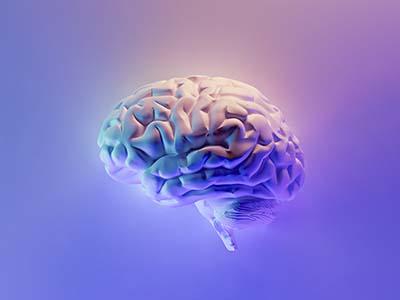What is happening when you think? Is your mind just the result of electrochemical activity? Or is there something more to your consciousness—something beyond physical measurement?
Is the human mind the ultimate unexplored frontier?
The human race has explored mysteries in seemingly every corner of creation! Men and women with courage to match their curiosity have ventured to the highest mountains and the deepest caves. When we cannot go there ourselves, we send machines to explore for us: plunging robotic submersibles to scour the depths of the ocean and hurtling complex probes to the very edges of our solar system and beyond.
Yet, even as human beings apply their marvelous minds to the understanding of the unknowns before us, one area remains, perhaps, the greatest mystery of all: the human mind, itself!
In many ways, science in recent years has come to understand more about the physical brain than ever before. Parts of the brain related to reason, thought and emotion—even to moral judgment—are beginning to yield some of their secrets.
But as more is learned about the human brain, the human mind seems ever more mysterious! Some of the scientific findings concerning the brain and the mind seem contradictory—pointing to a marvelously complex physical structure, but also to something that extends beyond the physical: beyond our ability to measure, weigh or count.
What is it about the human mind that makes us so remarkably different than the animals around us—capable of so much more? What is the answer to the mystery of the mind?
Powerful Differences
Like many other creatures on planet Earth, human beings have a brain—an intricate, physical organ devoted to controlling the various systems of the body and playing a central role in directing its behavior. Because human beings share this trait with many other animals, a common assumption is that the human being is just a “slightly more advanced” animal—one whose brain is a small-but-significant step above fellow creatures such as the chimpanzee or the dolphin.
Yet, when we compare the awesome mind-power of human beings with the relatively meager capabilities found throughout the animal kingdom, the difference is startling! Yes, we find animals such as chimpanzees stripping leaves from twigs to craft “tools,” and we may marvel at how Koko the gorilla was taught to communicate through simple sign language. But have we ever seen a group of orangutans team up to build a space shuttle? Have we witnessed a dolphin designing a stunning work of architecture? Has a parrot composed a passionate sonnet that stirs the soul?
Despite having a brain very similar physically to some other mammals, human beings have scaled amazing heights and achieved astonishing feats of vision, planning, creativity and imagination. No other species has ever come close! So, what makes the difference?
For many decades, scientists have poked, prodded and probed the brain, hoping to find clues to the mystery of how our brains make us who we are. In doing so, they have uncovered surprising facts that may pose a challenge to many people’s religious and philosophical understandings.
The Very Physical Brain
Science has demonstrated that there is a very physical component to our minds—to our personality and our intellect. Who we are as individuals is very dependent on the physical condition, health, and structure of our brains, and altering that structure can bring fundamental changes in core aspects of our personality and even our values.
Consider, for example, morality. Many would say that the ability to make moral choices, judging between right and wrong, is one of the defining elements of individual identity. Yet, simply by applying magnetic pulses to a part of the brain just above and behind the right ear, scientists have been able to alter people’s ability to make accurate moral judgments (“Magnets Can Alter Moral Judgment by Changing Brain Activity,” Medical News Today, April 1, 2010).
In fact, researchers have known for some time that physical alteration of the brain can cause changes in how we think and act, and even in our basic personality. Consider the case of railway worker Phineas Gage, who in the mid-1800s experienced a traumatic brain injury when an explosion propelled a 13-pound iron bar through his skull. Though the projectile tore out a portion of his brain, he not only survived—he recovered! Yet many friends and acquaintances testified that the Phineas Gage they had known was, in the words of his doctor, “no longer Gage”—that his personality and character was completely and radically altered (“Recovery from the passage of an iron bar through the head,” Dr. John Harlow, Publ. of the Massachusetts Medical Society, 1868).
Though Gage is one of the most famous cases, it seems he has a lot of company! Researchers have noted that profound brain injuries are frequently accompanied by dramatic changes in personality, such as increases in impulsive and aggressive behavior, and the loss of previous inhibitions (“Agitation, aggression, and disinhibition syndromes after traumatic brain injury,”NeuroRehabilitation. 2002;17(4):297–310).
Such findings seem to show clearly that much of who we are—our personality, our ability to make moral choices and judgments—is profoundly dependent on our physical brain. So, is the human brain all there is to the human mind?
Many scientists answer, “Yes!” Most researchers in the field of neuroscience conclude that our entire individual identity—our likes and dislikes, our values, our personality—is completely dependent on physical combinations of molecules and electrical impulses in our brain. For them, there is no mystery of the mind, because they have concluded: there is no mind! In their view, human thought, consciousness, moral judgment, free will—everything we call the “mind”—is an illusion, perpetuated by a physical brain acting mindlessly (quite literally) according to the laws of chemistry and physics, and the chance combinations of chemicals in our brain matter. As Jeffrey M. Schwartz, research professor of psychiatry at the University of California, Los Angeles, has written, “It is not merely that the will is not free, in the modern scientific view, not merely that it is constrained, a captive of material forces. It is, more radically, that the will, a manifestation of mind, does not even exist, because a mind independent of brain does not exist” (The Mind and the Brain, p. 8). This idea—that there is no “mind,” no “free will,” and nothing truly “spiritual” about human existence—is called materialism, and it is the reigning idea in research today.
More to “Mind” than “Brain”
The materialism of modern science, however, is increasingly being challenged by further findings that seem to demonstrate that the human mind is very real, and is somehow much more than can be explained by a physical brain alone. Consider the much-debated work of British neurologist John Lorber of Sheffield University, who has studied hydrocephalus—a condition in which much of the brain is missing and the skull is filled, instead, with fluid. Left untreated in early childhood development, individuals with hydrocephalus often face severe retardation and early death.
Lorber’s research has taken many by surprise, as he has studied startling cases of people who have led otherwise normal lives despite having almost no brain at all. One of the most celebrated cases involved a “socially completely normal” college student with an IQ of 126 who had earned a first-class honors degree in mathematics. Yet scans of this amazing young man’s skull indicated that he had virtually no brain. His cranium was almost completely filled with cerebrospinal fluid, leaving only a thin film of brain matter “measuring a millimeter or so” (“Is Your Brain Really Necessary?,” Science, 12 December 1980, pp. 1232–4).
If the human mind is nothing more than the human brain, how are such cases explained?
Additionally, scientific research is beginning to demonstrate more clearly than ever that the human mind and free will are not mere illusions generated by the physical brain. Writing in the Wall Street Journal (“How Thinking Can Change the Brain,” Jan. 19, 2007), author Sharon Begley describes neurological studies that were performed at the University of Wisconsin. Their work indicated that, over time, the structure of the brain can be changed merely by the act of thinking!
The standard materialist world view makes the claim that this is impossible, because “mind” is supposed to be merely the effect, and physical brain the cause. But studies are demonstrating that the reverse can also be the case. Far from the brain creating the mind, scientists are discovering that mind can change the brain—it is a “two-way street!”
So, what exactly is going on here? Are all these different scientists reaching incompatible conclusions? What is the relationship between mind and brain? It may surprise many modern readers to learn that the missing dimension in this discussion can be found in an ancient source of knowledge: the Bible! God’s word reveals the truth about the mystery of human mind—a truth that agrees with the findings of science, rightly understood, and points us to deeper, awe-inspiring truth that science alone could never discover!
Mankind: Something More
In the book of Genesis, God reveals that He made human beings out of the dust of the earth (Genesis 2:7). Like the other living beings in our world, mankind is a part of God’s creation. Unlike God and His angels in the spirit realm, human beings are physical beings, subject to death (Genesis 2:17; 3:19).
Human beings see the world through physical eyes that collect physical light and focus it onto physical retinas in our two eyes. Electrical signals then migrate to the brain, where they register that something has been seen. Similarly, as human beings, we hear the world through physical ears, feel it through physical touch, and smell it through a physical nose. The brain collects, channels, processes and manages all this incoming sensory information.
The mind, however, involves much more than the collection of physical data! Left with nothing more than a physical brain, human beings would be no different than the animals—responding to stimuli, taking care of physical needs and processing at the most mundane of levels.
But God intends much more for mankind than life at “mundane levels.” When He describes the creation of the animals, he says that He “made the beast of the earth according to its kind, cattle according to its kind, and everything that creeps on the earth according to its kind” (Genesis 1:25).
So, are human beings merely a “human kind”? No! When it comes to the creation of mankind, God tells a very different story! “Then God said, ‘Let Us make man in Our image, according to Our likeness; let them have dominion over the fish of the sea, over the birds of the air, and over the cattle, over all the earth and over every creeping thing that creeps on the earth.’ So God created man in His own image; in the image of God He created him; male and female He created them” (Genesis 1:26–27).
Unlike the animals—each made after its own animal kind—the Bible boldly declares that human beings are made after the God kind! From the beginning, God intended human beings to be like Himself! When His entire, wondrous plan is fully understood, we see that God has created human beings for the purpose of growing in His holy and righteous character, until they not only resemble God on the outside, but also radiate His character from the inside! God’s plan is to transform human beings from their physical, mortal existence into an eternal spiritual existence (1 Corinthians 15:50–55)! To learn more about God’s awesome purpose for you and me, please read our inspiring booklet, Your Ultimate Destiny.
As part of His plan for humanity, God has added an extra element to human existence, which works with human brain to make men and women so much more than the animals they would otherwise be. This element is called “the spirit in man.” Combined with the physical brain, this imparts to human beings a powerful mind, allowing accomplishments far beyond the simple instincts of even the brightest dolphins or chimpanzees.
We read about this spirit in Scripture. As Elihu tells the patriarch Job, “there is a spirit in man, and the breath of the Almighty gives him understanding” (Job 32:8). Indeed, it is the spirit in man that gives him knowledge and comprehension: “For what man knows the things of a man except the spirit of the man which is in him?” (1 Corinthians 2:11). This is not an immortal soul; it is an essential God-given element of the mortal human mind, making men and women who and what they are!
Key to the Resurrection!
Scripture explains that when human beings die, it is this human spirit—not an immortal soul, but rather the God-given element of our human identity—that God recovers. We read: “Then the dust will return to the earth as it was, and the spirit will return to God who gave it” (Ecclesiastes 12:7). At death, our physical bodies return to the earth from whence they came, but our “identity”—the “spirit in man” that contains the record of our character and experience—goes to God in preparation for the resurrection.
Is the “spirit in man” conscious after we die? No! Scripture plainly reveals that when human beings die, we are not conscious again until the resurrection from the dead (Ecclesiastes 3:18–21; 9:5). We read of those who “sleep in Jesus” (1 Thessalonians 4:14). Again and again, Scripture describes death not as a disembodied conscious state, but rather as a “sleep” without awareness (John 11:11; 1 Corinthians 11:30).
Every human being receives the “spirit in man” as part of God’s act of creation. However, for those who become Christians, an even more important Spirit is added to the equation. After repentance and baptism, Christians receive the Holy Spirit. Just as the “spirit in man” gives human beings a “mind-power” unknown to other animals, the Holy Spirit gives Christians a spiritual power unknown to other human beings.
The Holy Spirit, working with the human mind in the physical body, gives each Christian the ability to prepare to be born into eternal life as a member of the Family of God, at the resurrection of the dead.
When we come to understand all this, the mystery of the human mind becomes clear. The mind is not simply an “emergent property” of a physical brain, with free will and thought only an illusion caused by the collisions and combinations of mindless molecules and electrons. Nor is the mind an immortal and purely immaterial component. The human mind is the result of two necessary components: the physical human brain and the human spirit, imparted directly by God! This is the solution to the mystery of the mind! It is the product of the divinely crafted combination of brain plus spirit.
It explains why our marvelous minds are so dependent on the condition of our physical brains, yet also why our physical brains simply are not enough to produce the wondrous human mind!
This is why the animal world—while it can certainly amaze us—is still light years behind humanity in the realms of creativity and communication, and in capacity for reason and imagination. Unlike even the most remarkable of the animals, God designed human beings for a cosmic purpose!
Together, the physical brain and the spirit of man bestowed by God, combine to create the awesome human mind. And it is this mind, yielding to the instruction and care of a loving God, that has the power to come to know, imitate, and one day experience the presence and spiritual reality of its Creator. As is so often the case, God’s word shines its light upon mysteries that science alone simply cannot explain!






